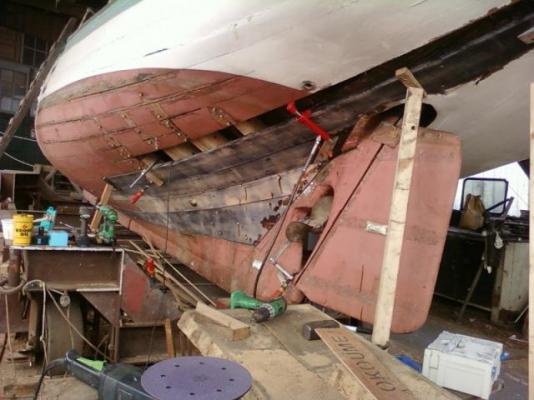-
Posts
9,207 -
Joined
-
Last visited
Content Type
Profiles
Forums
Gallery
Events
Posts posted by Jim Lad
-
-
-
What a fine memorial to your Grandfather, Nils! I'm looking forward to your future instalments.
John
- Bindy and Mirabell61
-
 2
2
-
-
-
Tim,
I'll have a think about it - just as soon as I can figure out what it is!
John
-
What country and what period are you looking for; also exactly what type of ship?
John
-
Standard grey, Tim? I would have thought 'Measure 31/20L would be more appropriate!

John
-
It was even closer to home to the bloke across the road!

John
-
Bad luck, Andy. 35mm film is only 24mm between the perforations.
John
-
Just catching up with what you're doing, Tim!
She's coming along very nicely indeed.
John
-
She's really coming on well, Piet! I'm glad that you're doing the open mine door - it'll certainly work out OK!
John
-
And mine, Robbyn!

John
-
She's really coming along nicely, Lars!
John
-
Now that's a clever idea for levelling the channels properly, Danny!
John
-
Ollie,
Just let the planks sweep up under the counter in a smooth curve. Have the planks meet each other on the centreline.
John
-
By golly, Andy, it looks like it might actually work!

What are you planning on using for the belt?
John
-
Ollie, you shouldn't need any stealers at the stern of a hull like this, unless you plan on using just the kit hull strips, in which case what you did on the first planking is the way to go.
In the actual ship the planks at the stern would have swept up the stern post in a nice curve, but that would, of course, need wider planks to achieve the shape.
The picture below shows the hull of the oyster smack 'Betty' undergoing repair. The lower strakes of planking have a much more pronounced sweep than is usual, but you can see the principal easily.
John
- egkb, ringbolt2013, WackoWolf and 1 other
-
 4
4
-
You'd better wait until well into the spring before you go home - otherwise you might not be able to find your house (unless you've arranged for a neighbour to shovel snow)!

John
-
Hmmm. They seem to be reasonably acceptable, Danny.

John
- mtaylor, clloyd and newbuilder101
-
 3
3
-
-
Andy, that looks as bad as making the cannons for a first rate!

John
-
Well done with the photos, Colin; as I recall that's a very dark gallery at the museum.
John
-
-
You're really making good progress on the conning tower, Piet.
John




HM Colonial Cutter Mermaid by olliechristo - FINISHED - Modellers ShipYard -
in - Kit build logs for subjects built from 1801 - 1850
Posted
Nicely done, Ollie!
John